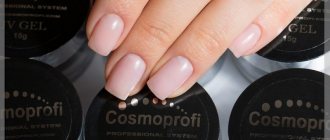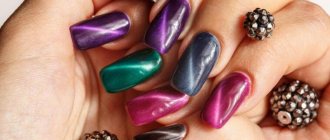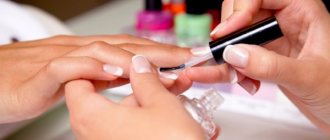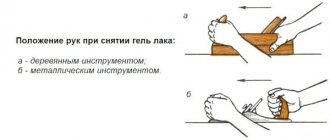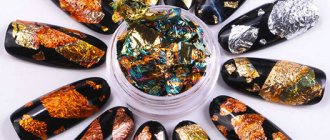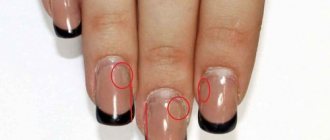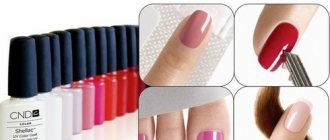It's interesting to learn new knowledge and skills. The process is especially exciting when it comes to preserving beauty and health. Moreover, in the nail business industry, the flight of creative thought and concern for health are successfully combined. It is not easy to create something original and spectacular on uneven, flaky nails. Well-groomed hands and beautiful nails with a stylish manicure give a woman confidence in herself and her attractiveness. Therefore, the main task when caring for nails is to strengthen and improve them.
Applying the base
Recently, it has become fashionable to learn how to do nail extensions and manicures at home. Many affordable, high-quality and easy-to-use materials have appeared. Strengthening nails with gel under gel polish has become a fairly popular procedure.
Why is the procedure useful?
Natural nails are prone to brittleness and flaking, so manicurists recommend strengthening them with gel.
This procedure is useful for the following reasons:
- The nail plate does not deteriorate; on the contrary, under the influence of the gel it thickens and becomes even.
- Not only the nails, but also the cuticles receive care, since the trimming manicure procedure is performed less frequently.
- Nails look natural, strengthening with gel preserves the natural shape of the plate.
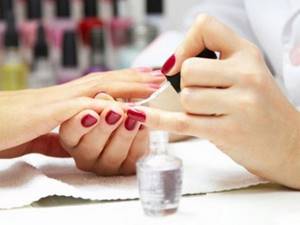
This procedure can be done both in the salon and at home, if you have the necessary knowledge and tools (experience will come with time).
Advantages and disadvantages of gel nail coating
The material in question is widely used in beauty salons, as it has the following advantages:
- nails become strong and difficult to break when hitting hard objects;
- the material does not allow them to delaminate and preserves the structure of the plates;
- the plates become smooth, shiny, neat;
- The manicure remains beautiful longer and does not require daily correction.
Among the disadvantages, experts note that the strengthening has its own service life: the procedure will last for 2-3 weeks (it all depends on the individual characteristics of the nails and the speed of their growth), then a correction must be made: the gel grows along with the nails, which makes the manicure not aesthetically pleasing .
Hence the second drawback: correction takes the same amount of time as the primary procedure. For an experienced master – 1–1.5 hours, at home – 2–2.5 hours.
What is better to use gel or biogel to strengthen nails?
Under gel polish, nail plates can be strengthened with both gel and biogel. These materials differ primarily in their composition, and they also have different effects on the treated areas.
Gel is a synthetic (artificial) material - a glass-like polymer that hardens under the influence of a UV lamp. Biogel is a more natural product - a rubber polymer, very elastic and easy to use.
Biogel is used to improve the health of nails, it has a positive effect on them and does not spoil them at all. When using this material, there is no need to cut down the plate; it is applied in a thin layer, retains the natural elasticity of the nail, and does not chip. The biogel lasts no more than 2 weeks and is removed with acetone-containing liquid.
The gel has more possibilities: it can also be used for extensions if there is a desire to change the length of the nails. This material lasts longer, but due to the lack of elasticity it is susceptible to chips and cracks and does not require complete removal before correction. It does not have healing properties, although it helps to thicken the natural plate.
general information

Why is the procedure for strengthening natural nails with gel so popular? It is worth mentioning that the strengthening gel comes in two types. It differs in characteristics and effects on nails.
- Biogel;
- Simple gel.

An ordinary gel has almost the same chemical composition as is used for gel nail extensions. It has almost all the same negative effects on the plates as extensions. Unless you have to cut down your own plate so much. Biogel is a different substance. This strengthening gel for nails has a positive effect on them during wear.
Gel strengthening of natural nails has the main advantage. It prevents the nail from breaking and cracking due to mechanical damage. The gel creates a thick and durable layer on the surface of the plate that protects the nail from scratches. Due to this layer, the nail does not bend even under fairly strong pressure.

The coating itself is quite strong and stable. It lasts on the nails for about three weeks, and sometimes more. However, as the nail grows, the border between the gel and your nail becomes visible, and therefore the coating has to be adjusted.
The gel layer is resistant to damage, scratches, and rubbing. It retains its aesthetic functions until the last day of wear. When using a colored coating, there is also no fading.
[yandex2] [google2]
Contraindications to strengthening nails with gel
Strengthening nails with gel (under gel polish or other coating) requires taking into account the following contraindications:
- the presence of fungal infections of the nail plates and skin;
- the presence of cracks and open wounds in the area where the gel is used;
- the presence of an allergic reaction to the components of the product used;
- increased humidity of the skin of the hands;
- individual rejection by the body of the material in question.
In addition, it is necessary to take into account the general condition of the body, since the following factors may cause the gel coating to adhere poorly, peel off and break:
- diabetes;
- circulatory disorders;
- hormonal imbalances;
- taking antibiotics;
- chemotherapy.
Sudden stressful situations, expecting a baby or feeding him can also cause the gel not to last the required 3 weeks.
Don't miss the most popular article in the section: How to draw monograms on nails step by step for beginners. Instructions with photos.
Types of firming gels
Nail strengthening is carried out using different gels - single-phase, two-phase and three-phase. The main difference between them is the number of stages. Single-phase coatings combine a base, base and topcoat, while three-phase coating is applied in 3 stages.
Ordinary
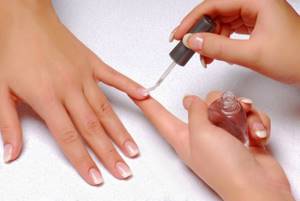
In most cases, this gel is used to build up and give nails a certain shape. There are various compositions. Some are quite elastic and suitable for creating only short nails, while others are more rigid and can be used to create any length.
But this strengthening is only minimal; the gel fills the unevenness and cracks on the nail plate and, as a result, a kind of protective shell is created. It is removed by filing; after removing it, the nails become weak and brittle.
Biogel
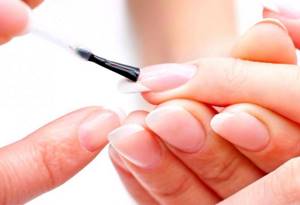
Strengthening with this product differs from the previous one in that the biogel consists of natural ingredients. Also, to apply it, you do not need to file off the top of the nail. The main ingredient of the biogel is protein; its molecular structure is similar to the structure of the nail plate. Therefore, the gel lasts from two weeks to a month. Also, the coating is porous in its structure, which does not interfere with the access of oxygen to the nail cells.
Removing biogel is also much safer compared to the previous option. Therefore, it is most often used to restore nails.
Materials and tools
In order to carry out the strengthening procedure efficiently, it is recommended to stock up on the necessary tools and materials.
To prepare your nails and perform a manicure you will need the following:
- file, buff (help to give the desired shape, level the surface of the plates);
- orange or metal stick (pushes back the cuticle);
- remover (used for unedged manicure) or nippers (for classic manicure).
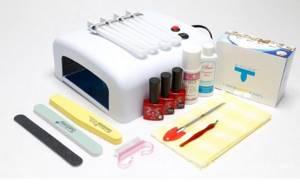
To apply the gel coating, you must purchase the following:
- only gel (if it is single-phase), gel+base+finish (if the product is three-phase) or biogel;
- primer to remove excess oil (acid-free for normal nails, acidic for wet nails);
- dense synthetic brush (used to apply the material);
- UV lamp (to dry each layer).
Design tools are chosen taking into account what is planned: it can be gel polish, rubbing, decorative elements, glitter.
Nail preparation
Before the strengthening procedure, nails must be treated, which, firstly, will allow you to perform a high-quality manicure, and secondly, will provide your hands with a well-groomed, aesthetic appearance. Experts distinguish three main types of manicure: classic (edged), European (unedged), hardware.
A classic manicure involves removing the cuticle with special nippers, where it is first moved back and then removed. Before the hand procedure, it is recommended to take a bath, which will soften rough skin and simplify the entire manicure process.
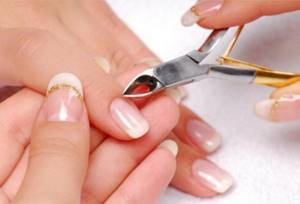
European manicure involves removing nail polish using a special softening agent - remover. The procedure goes as follows: first the remover is applied, and after a while the softened cuticle is moved with an orange stick.
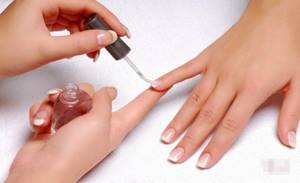
Hardware manicure is the most gentle; it not only removes the cuticle, but also gives the plates the desired shape. Such a device can be bought in specialized stores; it includes all the necessary attachments and instructions for use.
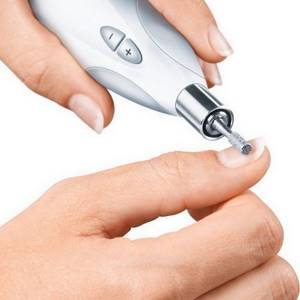
Next, give the nails the desired shape: square, almond-shaped, rounded or sharp. In this case, it is recommended to move the file in one direction, so the plates are less injured. To ensure that the gel adheres well, the nails are treated with a soft buff; however, you should not overdo it; the plate should not be too thin.
The last step in preparing the nails is degreasing them with a special composition; this procedure will also help the gel to firmly take hold. After removing excess shine, the nail plates should not be touched. If biogel is used for the strengthening procedure, then experts do not recommend sanding the nails with a buff; it is enough to just degrease them.
Further nail care
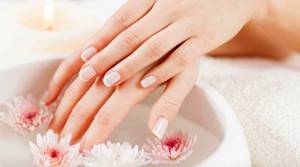
After strengthening your nails, you should follow a few tips that will make the gel last as long as possible.
- Tip #1. Limit contact with hot water for the first two days. Even though gel is applied to your nails, the nail plate is still quite sensitive to sudden temperature changes. But you shouldn't take this literally. You can wash your hands. You just need to limit prolonged contact with water.
- Tip #2. Protect your hands from household chemicals. When handling household chemicals, wear rubber gloves. Gloves will not only extend the life of the gel coating, but will also protect the free edge of the nails and the skin of the hands from drying out.
- Tip #3. Remember that nails are not “tools”. There is no need to tighten screws, pick or pry anything with your manicure.
- Tip #4. Take care of your nails. Coating with a restorative gel does not relieve you of the responsibility to take care of the health of your nails. Use a variety of products that will moisturize your hand skin and cuticles. Don't forget to provide your body with the necessary amount of vitamins.
- Tip #5. Do not pick out the coating. By doing something like this, you risk damaging the nail plate even more.
The tips are quite easy to follow. But, despite their simplicity, they are effective and will help strengthen your nails and extend the life of the gel.
Strengthening nails with gel. Instructions
Strengthening nails under gel polish using gel can be done with a single-phase or three-phase agent. If the product is single-phase, then only this gel is applied to the prepared nail plates; if it is three-phase, then three different products are used: base, constructor and finish.
Experts also pay attention to other necessary conditions:
- In order for the gel coating to last longer, it is not recommended to use any moisturizer on the skin of the hands before the procedure;
- if a bath was made before processing the plates, then it is better to carry out the strengthening procedure the next day;
- An additional product – a rubber base – will help achieve a perfectly flat surface;
- To avoid chips and cracks, at each stage of strengthening it is necessary to carefully seal the end of the marigold.
The most important thing is that for the result to be pleasing to the eye, and for the manicure to last at least 3 weeks, you should complete the following three mandatory steps.
Step 1: base
Base is a transparent material from which the strengthening procedure begins. Apply the product with a thick synthetic brush in a thin layer. Dry the base in a lamp, the exposure time is from 30 s to 1 min (this depends on the quality of the lamps used and the manufacturer of the material).
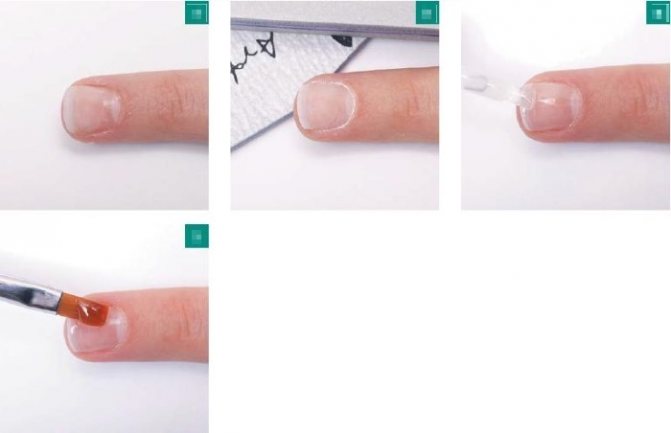
If a single-phase product is used, then the gel is also applied in a thin layer and dried in a lamp.
Step 2: Base Layer
When the base has dried, they begin to work with the main layer, it is also called construction or sculpture. Since strengthening does not involve the process of changing the shape and length of the nail, the product is applied quite densely, but not in a greasy layer.

Instructions for strengthening nails with gel under gel polish in photo
In this case, the gel should not be attached to the cuticle and side ridges, which can subsequently lead to peeling and chipping of the material. If the product does get on areas close to the nail, it should be removed with a cotton swab dipped in a degreaser. Drying the sculpture layer in a lamp.
Step 3: Finish
Top Coat is the last, final layer. Before applying it, you need to make sure that the previous layers lay flat; if this is not the case, then you should make a sawdust of the unevenly distributed material with a soft buffer. The finish is applied with the same dense synthetic brush and polymerized in a lamp. The final touch is to remove the sticky layer (if there is one) with a special napkin.
The procedure is completed by applying gel polish or other coating. When choosing gel polish, do not forget about the top coat, which will allow the product to last much longer.
Causes of fragility
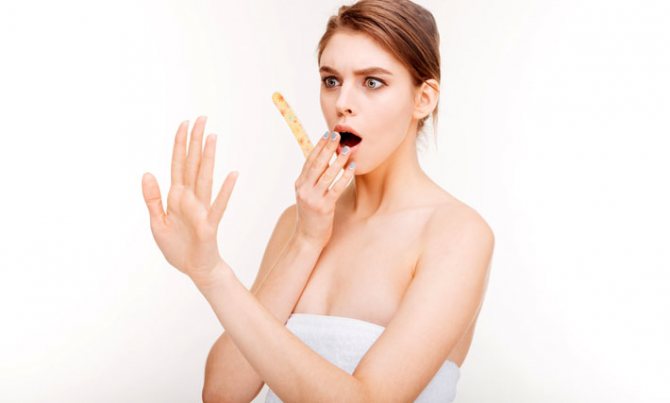
Before moving on to strengthening natural nails, you need to clearly understand that they are not brittle just like that. Nails can be considered one of the main indicators of human health, and their condition can determine more than 20 diseases before symptoms appear. Among the main reasons why nails break are the following:
- Incorrect or too frequent use of varnishes and polish removers lead to brittleness.
- Contact with household chemicals without gloves
- Harmful effects of chemicals that a person encounters in certain areas of professional activity. These can be burns from acids or alkalis.
- Sudden temperature changes. If you do not protect your hands from the cold by wearing mittens or gloves, your nails will dry out, become thin and brittle.
- Incorrect care. Avoid using clippers, which can damage the nail plate. Use special files that will allow you to remove excess length and not harm the nail.
- Long stay in the pool. Water with bleach dissolved in it negatively affects the health of nails.
- Lack of vitamins and minerals. The lack of calcium, selenium, zinc, silicon, iron and vitamins A, E, and D has a particularly acute effect on strength.
Strengthening natural nails with biogel
Biogel can also be used as a base for gel polish, however, this material is safer for nails, in addition, it is odorless, therefore it is approved for use by expectant and nursing mothers and allergy sufferers. Like gel coating, the material in question can be single-phase or three-phase.
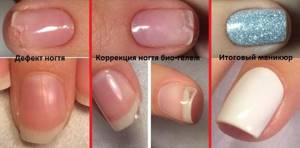
Strengthening nails with biogel is carried out according to the same scheme in three steps: a base is applied, then the main layer and finish, each layer is dried in a lamp.
Don't miss the most popular article in the section: How to extend nails with gel polish. Nail extension instructions for beginners. Photo.
Gel application technology
You can strengthen the plate and apply a decorative coating in a nail salon. The procedure is performed in stages:
- When you come to the salon, make sure of the quality of the materials used; the product must have a certificate.
- Pay attention to the disinfection of the master’s hands, materials and work surface.
- The procedure begins with preparation: the surface is cleaned with a buff, the cuticle is removed using an uncut method or moved with an orange stick.
- Degrease and apply primer. Let it dry.
- Apply the base coat in a thin layer and dry it in a UV lamp. Drying time is determined by the lamp power and takes from 1 to 3 minutes.
- Distribute the selected biogel or gel polish, leaving 2 mm to the cuticle. Dry in a lamp, remove the sticky layer.
- The shape is created using a fine abrasive file and polished with a buff.
- Using this technology, both natural and decorative manicures are made.
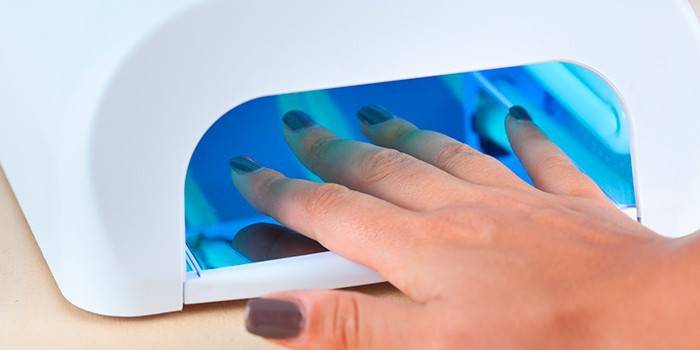
Correction and removal of gel after strengthening
Depending on the rate of nail growth, corrections will need to be made. The procedure is repeated after 2–3 weeks. During regrowth, the load on the stress zone of the nail, which is located approximately in the middle, changes. It will definitely be re-strengthened. During correction, the top layer or the coating is removed completely if the procedure is no longer necessary. Removal occurs using a special solvent. There are several types of correction:
- Small - eliminating defects, strengthening an overgrown part or changing the design.
- Medium - used to correct the shape if the nail has grown significantly.
- Large - necessary for a radical change in shape, if the plate is broken or cracked.

How to remove artificial material
The material in question cannot simply be removed with nail polish remover. Experts recommend filing off the gel; a glass or metal file with notches will not work; it is better to use a buffer with an abrasiveness of 100–150 grit, designed specifically for artificial materials.
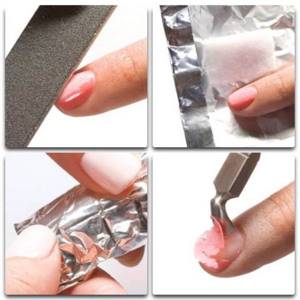
You need to file off the gel coating carefully so as not to hurt the natural nail. The dust generated during the procedure should be periodically brushed off and the nails moistened with liquid, then the layer of artificial material and natural coating will be clearly visible.
Cleaned nails are sanded and polished, and the surface is treated with a moisturizing component. The final touch is the application of a strengthening base.
If biogel was used as a base for gel polish to strengthen nails, it is removed with a special product or regular acetone. Cotton pads are soaked in the existing liquid, applied to the nails and wrapped in foil for 15–20 minutes. When the material dissolves, it is carefully removed with tweezers. The plates are then polished and lubricated with a nutrient.
You can strengthen natural nail plates with the help of modern materials - gel or biogel. The procedure can be carried out both in the salon and at home, the main thing is to follow the instructions exactly, then beautiful nails will delight you for at least 3 weeks.
Advice from experienced manicurists
Strengthening nails with gel
By following the step-by-step instructions, girls will be able to strengthen their nails with their own hands. Experienced professionals advise following the correct technique for applying biogel: paint first in the center from the base of the nail up, then in stripes on the sides. Having sealed the ends with gel, you should hold your hand with your nails towards the floor for a few seconds - this way the varnish coating will be better distributed over the surface, and the transverse bend will take a rounded shape.
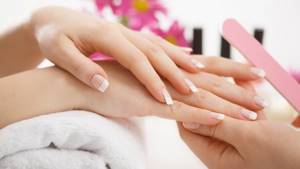
File the ends of the nail
20-minute daily baths will help severely peeling nails:
- with starch (tbsp/l of water);
- with apple cider vinegar and olive oil (1/1);
- with sea salt (1 tbsp salt / l water + 8 drops of iodine).
Experienced professionals also advise:
- Between painting with varnish, you need to take breaks of 2-3 days so that your nails can rest.
- Nail polish remover that does not contain acetone helps prevent the plates from drying out.
- For a high-quality manicure, apply a base before applying varnish. It will protect your nails from the dyes in its composition. Preference should be given to thick rubber. Most suitable for this are: Lovely Base, Adore Professional, Komilfo, NeoNail.
- Biogels are better suited for problem nails: El Corazon, Atica TM, Yoko; Bio Stretch Gel.
- To get perfect round nail highlights, you need a round lamp. Without it, it is difficult to make them beautiful. For this you need a simple table lamp. After applying the strengthening composition, the nails are kept under such a lamp for 25-30 seconds, only then sent to a UV lamp to completely harden.
The easiest and most economical way to strengthen your nails with gel is to take the first step and master a simple technique. If, nevertheless, the whole procedure seems complicated to someone, then salons are an excellent way out of the situation. The main thing is that your nails shine with health and beauty.
